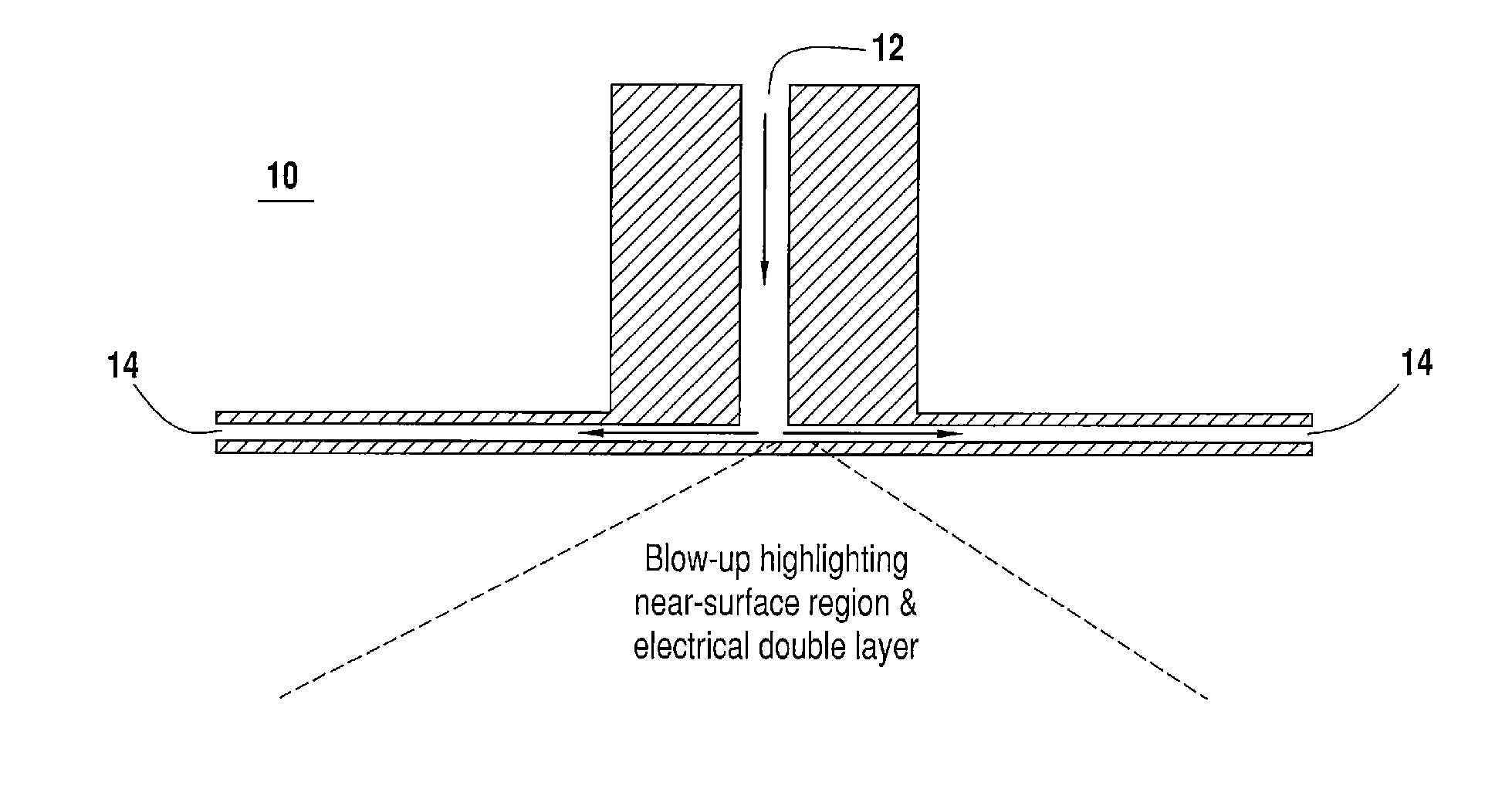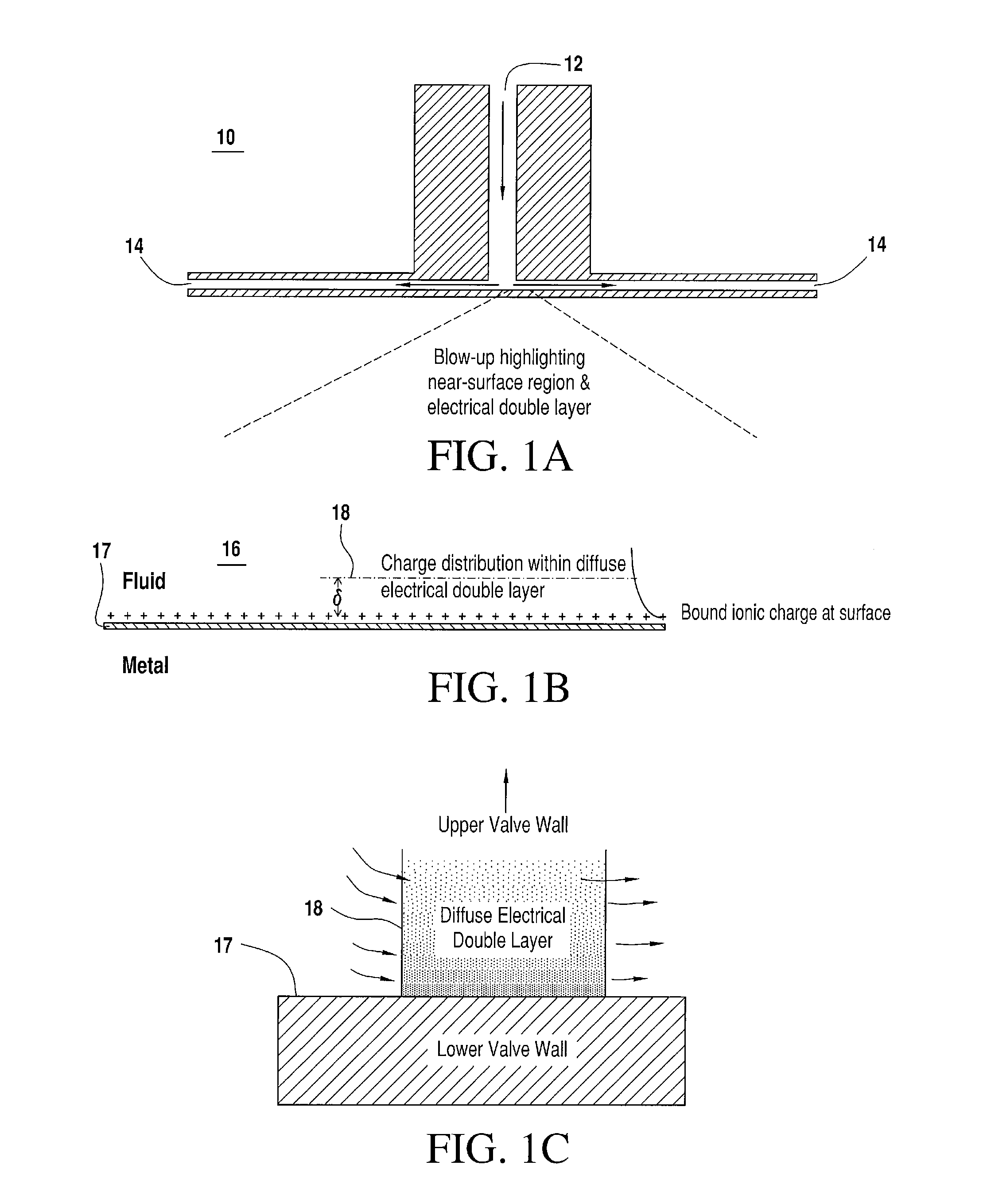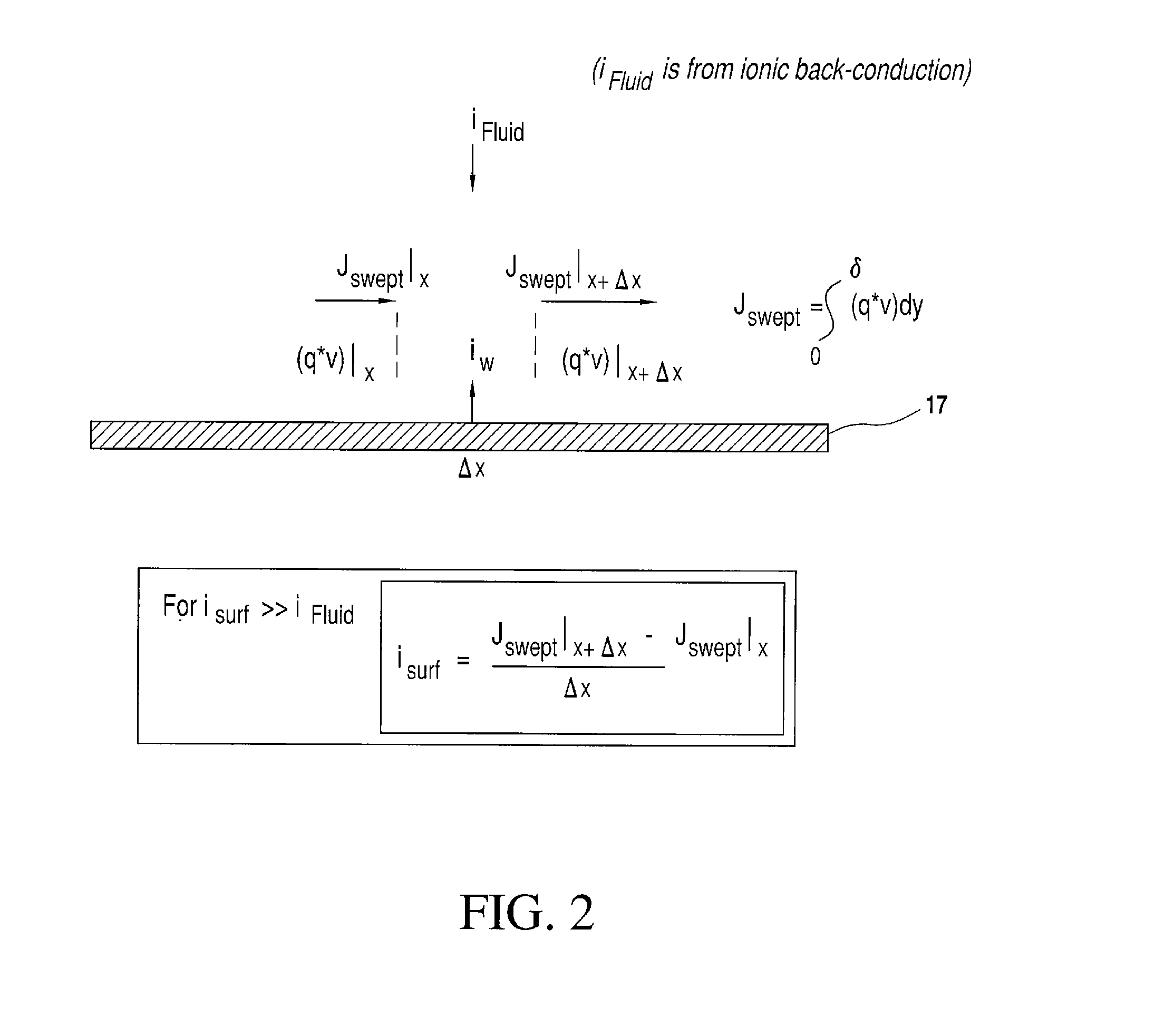Redox couple-based mitigation of fluid-flow-driven electrochemical surface degradation
a technology of electrochemical surface degradation and redox couple, which is applied in the field of hydrochemical systems, can solve the problems of electrokinetic driven corrosion, premature degradation of hydrocarbon-based hydraulic fluids in valves that had operated reliably using hydrocarbon-based hydraulic fluids, and unacceptable valve performance, and achieve the effect of reducing the rate of surface current induced degradation
- Summary
- Abstract
- Description
- Claims
- Application Information
AI Technical Summary
Benefits of technology
Problems solved by technology
Method used
Image
Examples
example 1
[0074]Testing is run using fluids with and without a metallocene redox couple. The metallocene redox couple is added to the test hydraulic fluid at a concentration ranging from about 0.05% to about 0.4%, by weight of charged metallocene and from about 0.05% to about 0.4% by weight of neutral metallocene. Test hardware is partitioned into two separate test systems: A) the fluid without the metallocene redox couple; and B) the fluid with the metallocene redox couple. Each test system includes:[0075]1. Reservoir for holding hydraulic fluid[0076]2. Pump to pressurize fluid to typical service pressures[0077]3. Pressurized fluid flow path to the test piece[0078]4. Test pieces with internal flow geometry (especially spatial variation of fluid flow velocity) and materials of construction similar to the hydraulic valve being simulated[0079]5. Return flow path on low-pressure side of valve, returning the fluid to the reservoir
[0080]Each of the test systems supports simultaneous testing of mul...
example 2
[0082]According to a further Example, testing is run using fluids with and without a ferrocenium / ferrocene redox couple. Ferrocence (0.2 wt %) (CAS registry number 102-54-5, molecular formula C10H10Fe) and a Ferrocenium salt, more specifically, Ferrocenium hexafluorophosphate (0.2 wt %) (CAS registry number 11077-24-0, molecular formula C10H10F6FeP) is added to the test hydraulic fluid. Test hardware is partitioned into two separate test systems: A) fluid without ferrocenium / ferrocene redox couple, and B) fluid with the ferrocenium / ferrocene redox couple. Each test system includes:[0083]1. Reservoir for holding hydraulic fluid[0084]2. Pump to pressurize fluid to typical service pressures[0085]3. Pressurized fluid flow path to the test piece[0086]4. Test pieces with internal flow geometry (especially spatial variation of fluid flow velocity) and materials of construction similar to the hydraulic valve being simulated[0087]5. Return flow path on low-pressure side of valve, returning t...
PUM
| Property | Measurement | Unit |
|---|---|---|
| oxidation currents | aaaaa | aaaaa |
| reduction currents | aaaaa | aaaaa |
| erosion | aaaaa | aaaaa |
Abstract
Description
Claims
Application Information
 Login to View More
Login to View More - R&D
- Intellectual Property
- Life Sciences
- Materials
- Tech Scout
- Unparalleled Data Quality
- Higher Quality Content
- 60% Fewer Hallucinations
Browse by: Latest US Patents, China's latest patents, Technical Efficacy Thesaurus, Application Domain, Technology Topic, Popular Technical Reports.
© 2025 PatSnap. All rights reserved.Legal|Privacy policy|Modern Slavery Act Transparency Statement|Sitemap|About US| Contact US: help@patsnap.com



